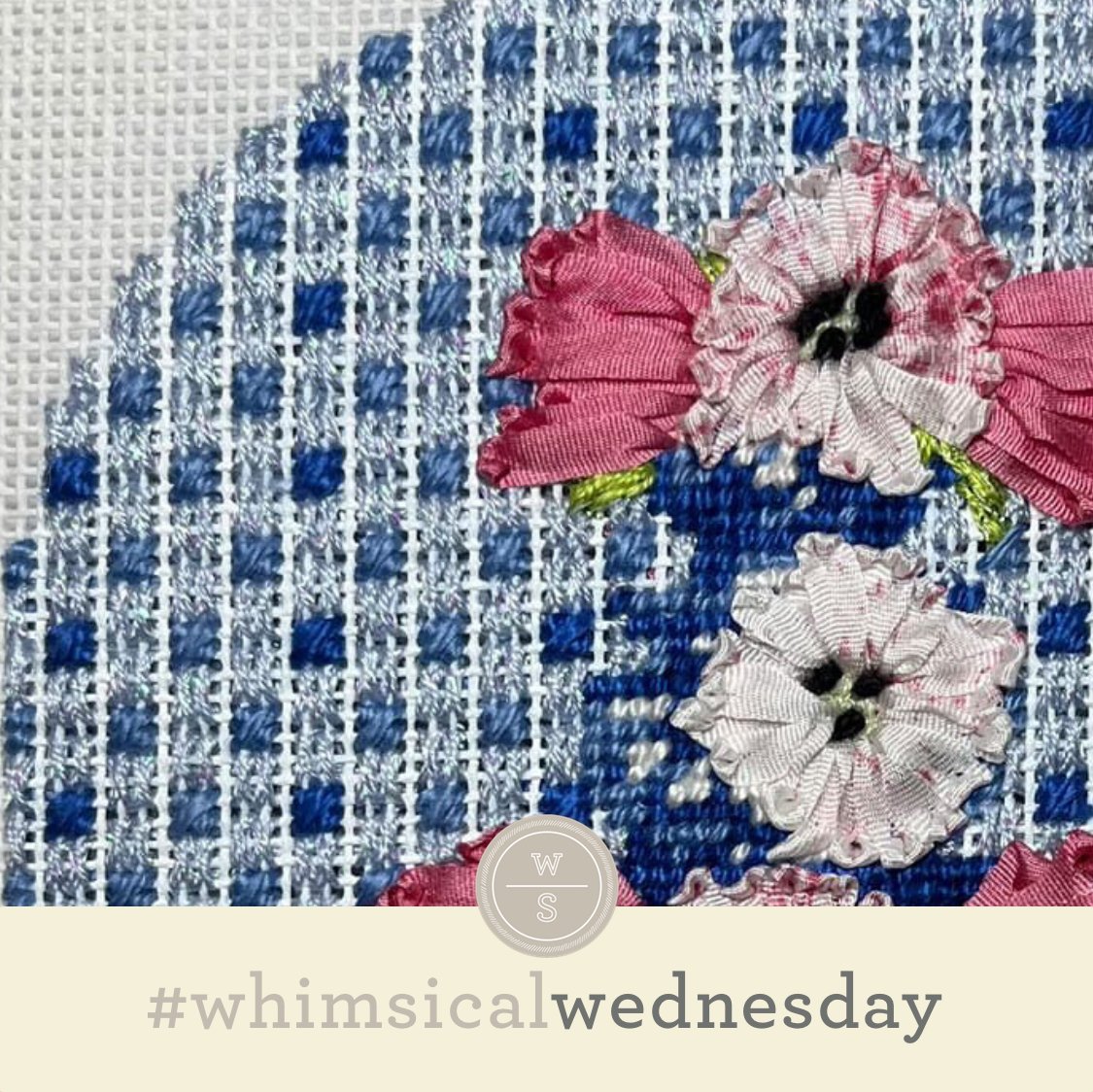Today is a fun one. I’m sharing one of my favorite stitches and what two creative students did with it (by not listening to me).
As today's post illustrates, the Double Octagons stitch is elegant, a tiny bit surprising, and versatile. The stitched sample is the background for the green teacup, part of a series at Bedecked and Beadazzled. I used Gloriana Silk Floss and stitched each set of octagons independently of the others. I used a modified backstitch to create both octagons in a pair, weaving the threads around the stitches on the back of the canvas to end the thread. (Sidebar: I absolutely love it when the overdyed thread you are NOT looking for matches the area you are stitching.)
Now for the fun part of the story. I recommended the double octagons in a random pattern for backgrounds to students at two separate events. Both of them ignored me and created triple octagons. The first used a single thread (ThreadWorx Cotton Floss) on the background of a beautiful Zecca butterfly. The second used three pinks (outside octagon to center: Silk Lame, Soie D'Alger, size 12 Kreinik on 13M). Both stitched samples are magical.
This is a universal background. You could use the Triple Octagons in the same pattern as the Double Octagons. You could use the Double Octagons in a random background. You could add more octagons..or fewer. It’s really fun.
As you are auditioning stitches (from any stitch source), count the number of canvas threads on the diagram that match your mesh size. And there you have what an inch of the stitch will look like. Evaluate that against the area where you plan to use the stitch and make your final decision. If you start integrating this step into your stitch selection process, you may be surprised at how many stitches you think are large are much smaller than you realize.
By (sometimes) including this step in my own process, I find I am now integrating much longer stitches than I ever thought I would. I used to think a stitch six rows long was super big. I have very much changed my tune, which has helped me expand my creativity, especially for large-space stitches.
Today’s stitch diagram, along with all other #whimsicalwednesday and #smallspacesunday stitch diagrams, can also be found on a Pinterest board here. Be sure to follow whimsicalstitch.com on Facebook, Pinterest, Instagram, and Twitter.
If you like what you see on this blog, there's more. Mary’s Whimsical Stitches is a series of four books offering contemporary how-to collections of more than 200 stitches (in each volume) for all stitchers, regardless of skill level. All books include updated and sequenced diagrams from this blog, plus a collection of all-new stitches from private lessons and other class projects. Visit here to find a needlepoint retailer that carries my books.
New to needlepoint or looking for a refresher? Please download a handy how-to guide covering basic needlepoint stitches and stitch compensation techniques along with new top-line information on needlepoint materials and tools, how to handle threads, and other helpful needlepoint resources.
whimsicalstitch.com also sells Stitch Guides and Stitch Concepts for Melissa Shirley Designs, Zecca Designs, Sandra Gilmore, Purple Palm, Maggie, and Penny MacLeod, and many more. Click here to see the newest guides and click here to see the entire collection.
I hope you have the perfect spot for this stitch! Please enjoy! Have a wonderful #whimsicalwednesday!
A Note about Diagrams
I use color in diagrams to make them as clear as possible. The primary function of different colored lines is to illustrate a stitch sequence. For example, the layering of colors demonstrates you add them in that order. They can also provide ideas on integrating additional threads (one line for each color). Or, you can use the same thread for all color lines. That's where I encourage you to use your imagination for the space you are stitching!






























